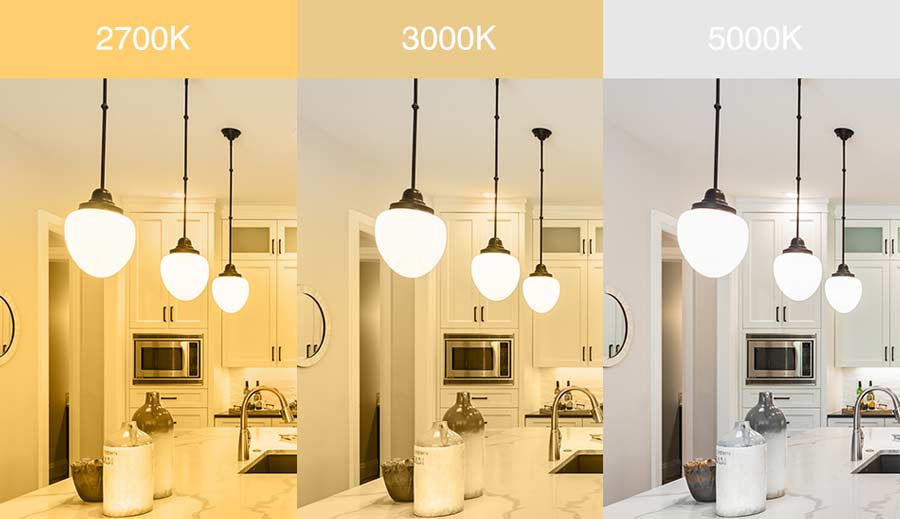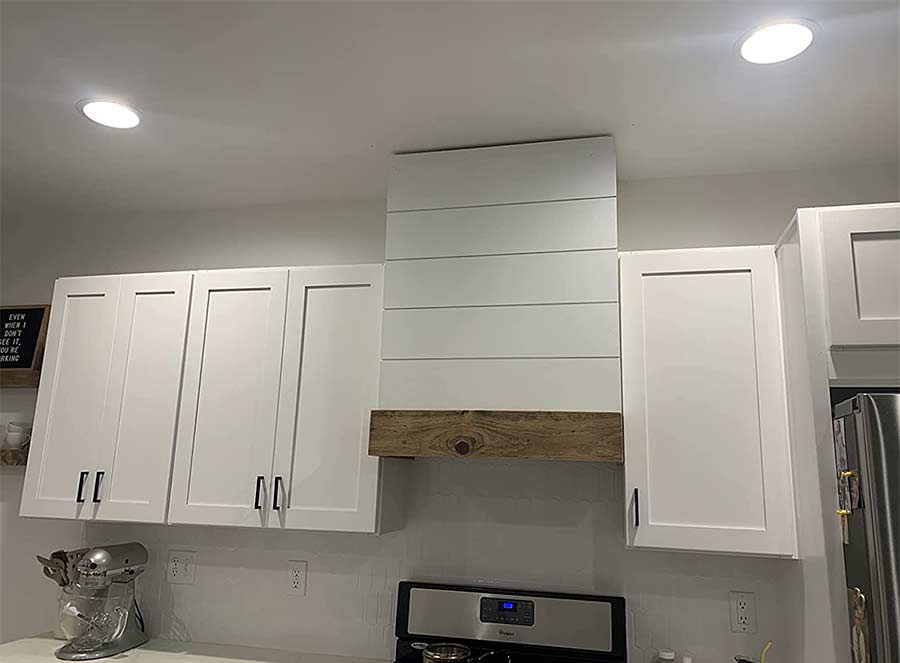When you’re thinking about getting LED light bulbs for your rooms, there’s a bunch of stuff to think about. It’s not just about checking the wattage; you gotta look at the Kelvin number and total lumens too, so you know how bright and what color temperature the LED bulb will be.
Every room needs its own kind of light. So, you gotta pick the right LED color for each space. Compare daylight, warm white, and soft white bulbs to figure out which one’s gonna be the best fit for each room.
What Is Color Temperature?
It’s a term we use to talk about how the light from a LED light bulb looks. We measure it in Kelvin and it goes from 1000 to 10000 on the scale.
When we’re debating between daylight, soft white, and bright white lighting, most color temperatures fall between 2000K and 6500K. Some might be a little lower or higher.
Knowing the Kelvin level of an LED bulb helps you understand how it’ll look and feel when it’s lighting up your room. There’s no right or wrong answer when it comes to picking the color temperature for a room.

What’s the Difference Between Daylight vs. Soft White Bulbs?
The biggest difference between daylight and soft white is their color temperature. Soft white is warm and, as the name implies, softer, while daylight is cool and bright.
- Soft white: 2700K ~ 3000K
- Warm white: 3000K ~ 4000K
- Cool or bright white: 4000K ~ 5000K
- Daylight: 5000K ~ 6500K
Soft white light falls in the range of 2700K to 3000K on the Kelvin scale. It’s considered warmer because it gives off an orangish glow that complements warm colors like red, orange, and brown in a room. The position on the Kelvin scale determines whether LED lighting feels warm or cool. For instance, a 2700K bulb will be warmer than a 3000K one.
Soft white lights are perfect for creating a cozy ambiance in places like kitchen nooks, living rooms, bathrooms, or bedrooms. They give off a warm, soothing glow, but they’re not great for tasks that require detailed focus or reading small print. Daylight lights range from 5000K to 6500K on the Kelvin scale. They mimic natural daylight with a bluish-white tint. Think of pure sunlight, which sits around 5000K, to understand how color temperatures play out in your space.
What’s better, daylight or soft white?
Where should you use daylight bulbs? Just like soft white bulbs, daylight bulbs come in varying hues. The higher the Kelvin level, the whiter the light. Daylight bulbs offer excellent color contrast, while soft white lights help blend colors in a room. Daylight is perfect for areas where you need to see intricate details, like garages, offices, makeup mirrors, or display cases. Choosing LED lighting is a personal choice. What looks good to me might not be your cup of tea. If you can, try out different lights to see which one suits you best.
Daylight vs soft white vs bright white
Upgrading your home lighting is a smart move. Deciding whether you want soft white, bright white, or daylight bulbs is something only you can figure out. Everyone has their own idea of what makes a comfy home. Some folks lean towards soft white for its cozy vibe, while others prefer the natural feel of daylight bulbs, especially in modern interiors. Let’s break down these three temperature options to help you figure out which one suits you best.
Daylight vs soft white for living room
Lighting is crucial for any living room’s interior design. Choosing between soft white, bright white, or daylight bulbs for your main background lighting can totally change the vibe of the room. Brighter lights make the living room feel more spacious, while softer tones tend to cozy it up a bit.
Remember, the living room serves multiple purposes. It might double as your home office during the day, your entertainment hub, or even your bedroom at night.
Since the living room is one of the most-used spots in your home, the lighting you pick should take a few things into account.
Think about the physical aspects of the living room before deciding on the bulb’s temperature and tone. How big is it? What parts of the space do you want to highlight?
If your living room faces north, it’ll likely be pretty dark. South-facing rooms get more natural light, especially in winter. East-facing rooms get that lovely morning sun, while west-facing ones enjoy sunsets and more evening light. Once you’ve sussed all that out, you can mix and match wall and ceiling lights to balance things out, along with floor and desk lamps to get just the right level of brightness.
Most living rooms need a three-light fixture for good overhead lighting. Add a 5-arm lamp for a bit of extra flair with your preferred temperature and color. If your ceiling’s high, chandeliers can look great, but if not, flush lighting is the way to go.
Dimmable lights are another cool option for adding contrast. Stick a floor lamp in a corner to bounce some light off the ceiling for a soft, diffuse glow, especially if you’re using daylight bulbs.
For task lighting in the living room, bright white bulbs are usually best. Soft white bulbs are great for ambient light, and daylight bulbs work well in darker spaces where natural light doesn’t reach often.
Table lamps are super important for your overall setup. They’re a flexible way to add another layer of lighting and can go pretty much anywhere. You’ve got plenty of options when it comes to temperature and color with those bad boys.
Soft white or daylight bulbs for bedroom
Usually, we use the bedroom to unwind. Soft white or warm white is the way to go for your bedroom lighting. Aim for lights with color temperatures between 2000K and 3500K.
But when it comes to “daylight” in bedroom lighting lingo, it’s not exactly what you want. It can be too bright and harsh, with a bluish tint.
For cozy vibes in the bedroom, stick with warm lighting. Use warm white bulbs in your bedroom lamps at night to help you chill out. It’s a tried and true choice for a relaxing atmosphere.
Daylight vs soft white bulbs for bathroom
For most bathrooms or vanities, you’ll want brighter lighting. The ideal color temperature for bathroom lighting is between 3000K and 5000K. This range works well above bathroom sinks and can also be helpful for aging eyes.
With daylight bulbs, everything is way brighter and you don’t get that yellow tint. No more yellow glow! It lights up my entire bathroom, and I can really see what I’m doing when I’m applying makeup. It’s not blue at all—just really clear light. I’m definitely putting these bulbs in all of my bathrooms.
Soft white or daylight led for kitchen
For most kitchens, soft white light is the way to go. It’s less harsh than daylight bulbs and really brings out the wood grain and earthy tones.
I started out with 2700K bulbs, but they gave off this orangey glow and made my white cabinets look kinda dull. Then I tried 4000K, and it was like everything turned blue and hurt my eyes. Finally, I landed on 3000K, and it was just right!

The 3000K bulbs brighten up the room without being too harsh. They look way better than the 2700K ones they replaced. It’s a nice, clean light that doesn’t lean too orange or too blue—just neutral and makes my white walls and cabinets pop. 3000K is a bit cooler than 2700K but still feels warm and cozy compared to 4000K.
Conclusion
So, is soft white or daylight better? There’s no one-size-fits-all answer. It really comes down to personal preference, but I’ve got some good tips to share based on what you like.

